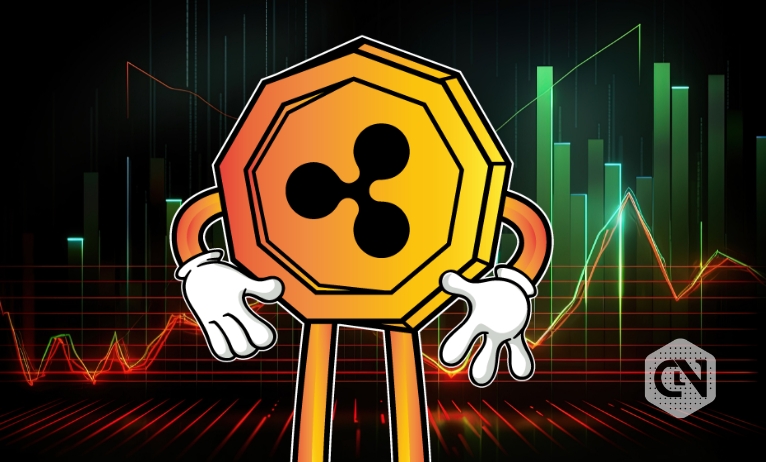This content has been archived. It may no longer be relevant.
In the fast-changing crypto space, it is often hard to adapt quickly to the latest innovations in digital coins. Recently, there have been some coins that have attracted quite a lot of interest. One example is Ripple. In 2012, it launched and quickly became one of the largest cryptocurrencies by market cap. In contrast to other widely used digital assets such as Bitcoin and Ethereum, based on de-centralization and blockchain technologies, Ripple operates with its proprietary network called “Ripple Net.”
Ripple’s History and Background
Ryan Fugger co-founded the original version of Ripple, which was later referred to as “Ripple Pay,” in 2004. It was the first decentralized payment system where people created their currency and performed payments independently of any authority or central governance. Ripple became meaningful when Jed McCaleb and Chris Larson joined it in 2011. Financed by venture capitalists with help from donating supporters, Ripple released the network in 2012, intending to change the cross-border payments system. The goal was to have an affordable, faster, and better way of transferring money between different financial institutions in other countries.
By 2013, Ripple was well on becoming popular in the bankers’ circle and had joined forces with giant banks like American Express and Santander. Today, more than 300 banking and financial agencies cooperate with Ripple in various fields of business. Blockchain has enabled them to come up with some notable milestones that are focused on real-time settlement as well. Ripple is one of the financial industry leaders innovating for real-time cross-border money transfers by building an efficient worldwide payments network.
Ripple’s Technology
In recent times, Ripple has become one of the most important technologies in terms of the cryptocurrency and blockchain domain. Rather than relying on a typical distributed consensus protocol, Ripple uses a unique system termed the Ripple Protocol Consensus Algorithm (RPCA). The algorithm uses a unique approach that makes it dependable and provides high scalability compared to other consensus algorithms. In contrast, RPCA works in a manner distinct from traditional blockchains. It takes advantage of the natural trust within a network to enable rapid and efficient consensus development.
Advertisement
Therefore, RPCA does not depend only on computational power but rather on reliable validators accepted by most of the network agents. This distinction results in several advantages for Ripple’s technology:
- Therefore, as compared to Proofs of Work algorithms, which involve the use of high computing processors, it consumes less energy and is eco-friendly.
- Additionally, transactions are authenticated quicker because miners do not have to solve intricate hash functions.
- It also reduces centralization risks since less resource are required to participate in transaction validation.
- Alternatively, other cryptocurrencies operate under blockchain technology but do not involve transaction charges due to mining costs.
How Ripple (XRP) is Being Adopted in Various Industries
Recently, Ripple (XRP) has become popular as it is being used for different purposes, such as banking, finance, or even entertainment. XRP’s use of innovative blockchain technology coupled with super quick transactions makes it increasingly popular among business firms.
One of the first sectors to adopt XRP is the banking industry, with many leading banks using Ripple’s network for transnational payments. XRP is an option for micro-payments in the entertainment sector, particularly by creators on platforms such as Coil. For instance, XRP’s adoption in an online gambling/casino section is gaining speed.
Online Ripple casino allows customers to have a safe payment mode using XRP. These benefits can be seen in lightning-fast transactions, which take seconds, unlike traditional methods and minuscule charges compared to credit/debit cards or wire transfers.
The Future of Ripple’s Growth Over the Next Few Years
In recent years, Ripple (a blockchain-based payment network and currency) has emerged as an alternative to conventional banking systems. Ripple’s unique characteristics of immediate cross-border transactions and zero transaction costs have proven that it may be an excellent alternative to traditional global remittances. Another important reason that may facilitate Ripple’s future growth is increasing adoption. This move has already set partnership ties with renowned institutions such as Santander and American Express. It is evidence of the proposed value concept.
Advertisement
Triangles are currently being used by several banks worldwide, which points to increased interest and possibilities of implementation in the future. It is worth mentioning that the corporation comes up with new enhancements, such as integrating intelligent contracts into its protocol or scaling for faster transactions. With time, the business has gone global. Therefore, it is increasingly becoming an unwritten rule for consumers to expect swift transfer options at affordable costs. Thus, taken together, it is argued that Ripple could show substantial development in several years.
Conclusion
With this in mind, it is essential to state that Ripple (XRP) remains one of the most promising cryptocurrencies to keep in view in the following years. It has established itself as a differentiated player in the global cryptocurrency market by concentrating on real-life scenarios and partnering with essential banks. It has reliably fast transaction speeds, accompanied by low costs, that appeal to both companies and individual customers. With the world moving toward digital payments, it puts Ripple in an excellent position to thrive in the future of finances.







